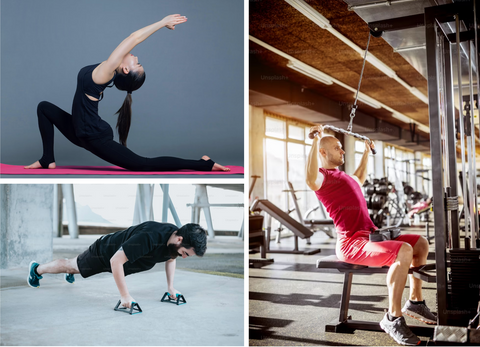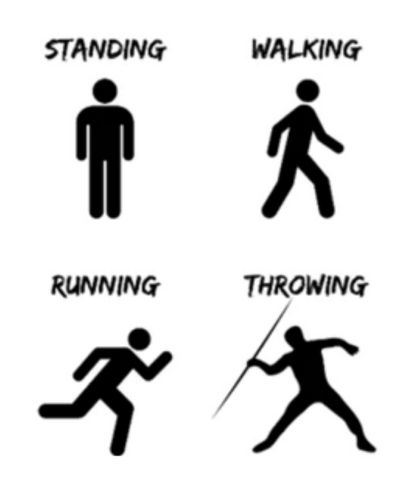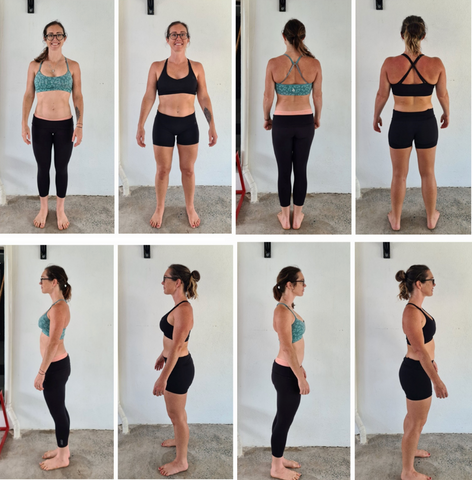Introduction
Like most topics related to health and exercise, the subject of injury prevention is vast. Functional Patterns (FP) provides a progressive and eye-opening perspective on this topic. The current mainstream methods of injury prevention often overlook the holistic needs of the body, focusing instead on isolated interventions. In doing so, they fail to address the important variables that are fundamental to human health – such as biomechanics and lifestyle behaviours from an evolutionary standpoint. This leaves a gaping hole in the efficacy of these approaches as it relates to providing comprehensive solutions towards injury prevention, but also health more broadly.
In this article, we challenge the status quo of injury prevention in exercise and fitness. We illustrate how FP doesn’t provide mere surface-level solutions, but rather how it explores a holistic approach that nurtures biomechanical optimization, fosters systemic resilience, and cultivates vitality from the roots up. We offer a paradigm shift not only in how we conceptualize injury prevention but also what constitutes injury itself. By reframing our approach to injury prevention and embracing the principles of FP, we endeavour to empower individuals to reclaim agency over their health and wellbeing amidst a myriad of factors in our lifestyles that are constantly opposing our physiology.
Flaws in the Traditional Injury Prevention Approach
Conventional methods of injury prevention generally boil down to an abstract equation of stretching what’s tight and strengthening what’s weak.

This approach fails to recognise how interconnected systems in the body allow us to move. It fails to consider how biomechanical imbalances contribute to injury and can even exacerbate existing issues. For example, instead of questioning why a muscle may be weak or tight in the first place and then addressing the factors leading to these issues, traditional approaches simply aim to treat the symptom of weakness or tightness. In a way, these are the victims of a bigger villain at large which essentially equates to kicking the proverbial can down the road. That is to say, that without addressing the root, precipitating cause/s of your symptoms, you will be perpetually compensating for those inefficiencies in the system.
The Functional Patterns Approach
Functional Patterns introduces a transformative perspective on injury prevention by viewing the body through the lens of tensegrity, recognising the interconnectedness of its structures and systems. Tensegrity refers to the structural integrity of an entity with optimal tensegrity being achieved through perfecting the balance of tension and compression. Much like a suspension bridge where cables (tension) and pillars (compression) are assembled in a manner that distributes forces evenly to maintain strength and stability. In the context of the body, tensegrity illustrates how muscles, bones, and connective tissues work together to maintain structural integrity and facilitate movement. Unlike traditional methods, this model emphasises the interconnectedness of the body's components, highlighting the importance of addressing the entire system rather than focusing on isolated parts. By understanding tensegrity, we recognise that injury prevention requires a holistic approach that considers the body as a unified entity, rather than treating individual muscles or joints in isolation.

Functional Patterns provides a fundamental shift to both approaching injury prevention and understanding injury itself. Rather than viewing injury as solely acute trauma, Functional Patterns recognises injury as any negative impact on the body that affects proper functioning, which can eventually manifest in disease or discomfort. By expanding our understanding of injury to encompass a broader spectrum of physiological dysfunctions, Functional Patterns equips individuals with the tools to address not only immediate pain points but also underlying imbalances and unhealthy lifestyle behaviours that predispose them to injury and chronic conditions. Chronicity leads to chronicity of other diseases.
Shifting Focus
If you have found yourself reading this article, odds are you have had an injury recently or are looking for solutions to your recurring issues. While focusing solely on preventing injury in isolation may seem sensible, we urge you to consider that there may be a deeper issue at hand: the need to optimise biomechanics and overall health. If an activity causes injury, it suggests that either the body is not adequately prepared for the demands of that task, or the activity itself is incompatible with what the body is designed to be able to handle. High-intensity workouts like Crossfit or the repetitive nature of something like cycling may pose injury risks as they operate in discordance to the human biological blueprint. Injury prevention should not be a standalone goal but rather a natural outcome of a well-conditioned body and proper mechanics.
To grasp this concept effectively, it's helpful to perceive the human body as an extraordinary product of evolution. Our biology has undergone extensive refinement over time, enabling us to excel in four fundamental activities essential for our survival: standing, walking, running, and throwing—collectively known as the FP First 4.

These actions have been integral to our physical existence throughout history, serving as the bedrock of our survival and overall physical prowess. With this in mind, a better way to approach injury prevention is to centre your efforts around mastering proper biomechanics in relation to these 4 foundational movements. You will find that by improving these movements and correcting your dysfunctions you will naturally be fortifying your body with improved performance under the demands of exercise. To illustrate this, check out Mark Labib working on enhancing his running mechanics, through an FP exercise below:

In turn, this is the most pure way of minimising your injury risk as a result. To explain further, if you’ve prepared your body to deal with the forces associated with the FP First 4, then you are going to be prepared for downstream movements of the First 4 (like cutting, jumping, lifting, etc) and virtually any demand an activity puts you under. All in all, this translates to a greatly reduced injury risk.
Check out the athletic performance gains from Nyssa below on the Sunshine Coast, Australia. By focusing on the FP First 4 with FP, she has been able to completely change her structure and how she deals with the forces that show up in movement. As a result, she is more prepared for everything that life can throw at her, meaning she has real, tangible injury prevention measures at play. Check out her progress PHOTOS and a link to a VIDEO of her gait cycle changes below:

Results by FP Practitioner Tim Robinson out of the Sunshine Coast. Australia
Conclusion
To truly prevent injury effectively, there must be a profound shift in mindset, transcending traditional methodologies. While the instinct may be to target specific problem areas through stretching tight muscles and strengthening weak ones, this approach falls short of a comprehensive solution. Injury and pain signal the body's inability to cope with demands placed upon it, prompting us to address root causes rather than merely treating symptoms if we want to eradicate the problem long term. This necessitates an understanding of the interconnected nature of the human body and a retraining aligned with our fundamental motions. In doing so, injury prevention becomes not a singular focus but a natural byproduct of a properly conditioned body. The key lies in prioritising the body's innate movements, such as standing, walking, running, and throwing, fostering improved performance, overall well-being, and reduced injury risk. For those eager to get started, Functional Patterns offers a vast network of practitioners which you can find via the practitioner map here: Find a Practitioner | Functional Patterns Worldwide. Or you can simply get a start with the Functional Patterns 10 Week Online Course found here: Education & Online Courses | Functional Patterns.







